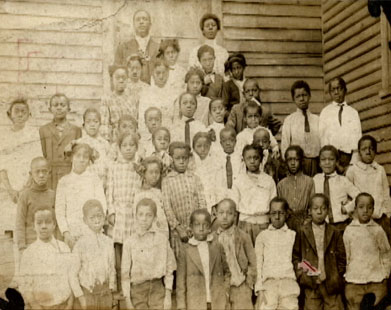Before Integration: Summer Hill School and Community

February 10, 2020
Summer Hill is a place filled with significant memories for the Cartersville African American community. It was a place where African Americans, regardless of their economic circumstances, lived in a separate community during segregation. The Summer Hill community included black entrepreneurs and businesses, as well as social and civic organizations.
Summer Hill School initially operated a school with only 55 students in grades 1-6. Black residents of Cartersville’s commitment to individual and community achievement drove the creation and expansion of the school. By 1893, enrollment reportedly had blossomed to 250, and parents were already petitioning for additional grades. By 1920, the school served 358 students.
On May 20, 1922, the Cartersville School Board accepted a proposal by the Colored Committee and the Julius Rosenwald Foundation to build a new school building. The Rosenwald Foundation, created to support African American education, provided matching funds to communities seeking to establish or improve black schools. Summer Hill residents raised $1500 through donations and fundraising events, collected various materials, and helped build the school. The new Summer Hill School was finished in late 1922.
The Cartersville School Board hired J. Stanley Morgan to replace principal S. L. Young in 1925. The Summer Hill School grew and evolved from 1922 to its closing in 1968. High school grades were added through the 1940s, and by 1951 Summer Hill had established all 12 grades.
Less than two years after the Supreme Court declared school segregation unconstitutional in its Brown v. Board of Education decision, the new building served as the high school while elementary students continued to attend classes in the 1922 building.
Summer Hill students, parents, and residents provided what the school needed when the local school board failed to do so. Band boosters, the Parent and Teacher Association, and other groups worked to raise money for band uniforms, classroom materials, building improvements, and school trips. Summer Hill school closed its doors as a high school in 1968 after the school integrated with Cartersille High. The building became a fully-integrated junior high.
Renovated and reopened to the public, the Summer Hill Complex now contains a museum. The Summer Hill Museum brings the story of Summer Hill and the area and school’s rich history to the Cartersville and Bartow County community. Through narratives and collections, the museum examines the formation and maintenance of Summer Hill, which managed to thrive in the once racially divided city of Cartersville.
Summer Hill played an important role in the African American community in Bartow County.



Mina Harper • Jun 23, 2021 at 1:16 am
Dear Taylor,
Thank you for this excellent article!
The Oral History Committee of the Etowah Valley Historical Society and the Bartow History Museum plan to record an oral history of Summer Hill. Summer Hill Heritage Museum will be gathering info and do the presentation. We need history from the beginning. If you can help, email Mina Harper, [email protected]. Put in the subject line Black History, so I do not delete your email.
Thank you in advance.
Mina Harper
Oral History Committee, Chair/Founder African American History Initiative